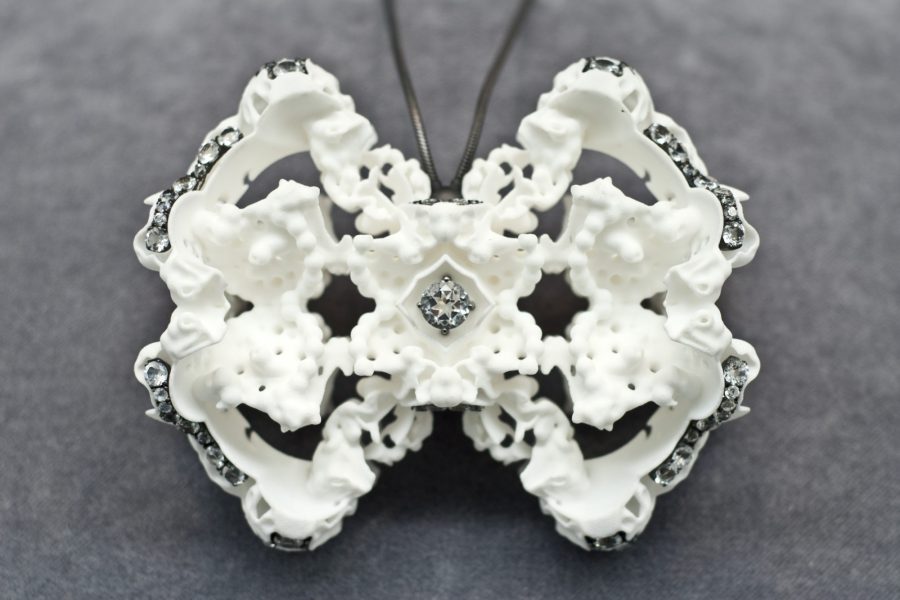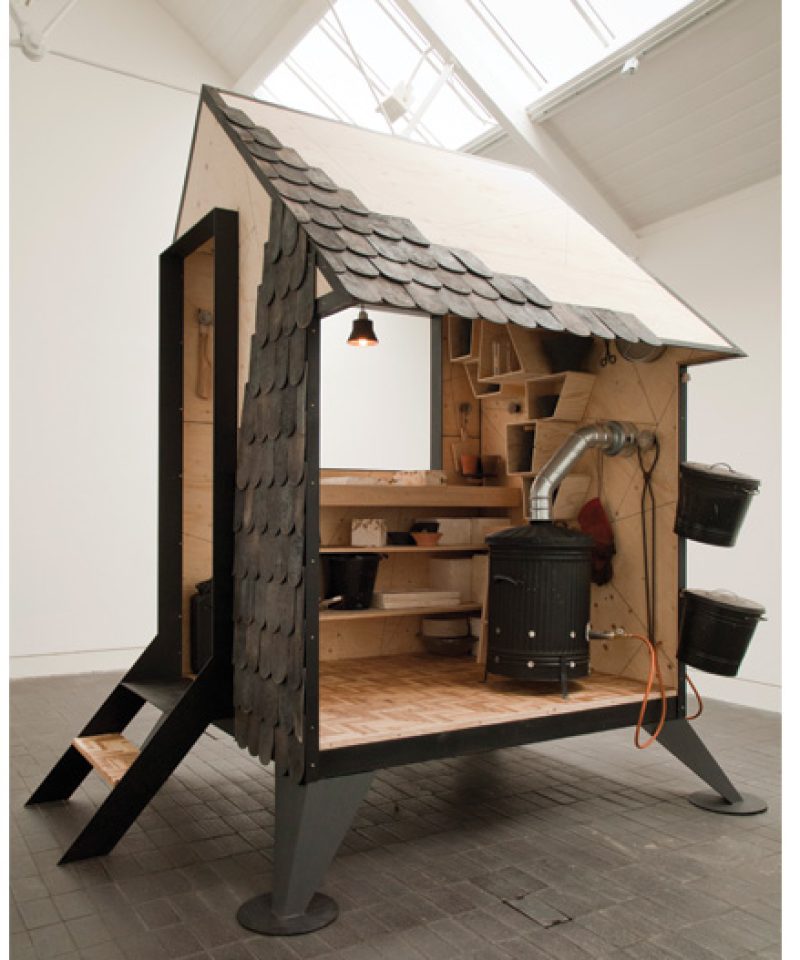William Shannon’s Kiln House is a visual story that unfolds as you encounter it. Walking towards it, you are aware that this is a building that a craftsperson might inhabit, albeit in some otherworldy folksy realm. It has folksy tiles on its roof and outer walls. Inside is a workbench.
You would probably stumbled upon it in a clearing in the Black Forest, not far from a village filled with axe-wielding woodsmen and buxom Fräulein. The owner would probably be sat at the workbench. He may be a goblin. Look closer and you see his task. He is making the tiles that cover the building he inhabits.
But look even closer and this construction does not belong to the fairy tale realm at all. The craftsman is creating the roof tiles for his own workshop. It is a model of modernism’s fantasy of self-reliance – a craft-based comment on the obsession with hermeneutical cities and structures dreamt of (and sometimes built) by architects from Le Corbusier to Oscar Niemeyer.
It is also very contemporary. It is not of the folksy past or far-flung future. You can see its urbanity in its metallic hulk. It looks like it could be put on the back of a truck at a moment’s notice. Its reality is that of pop-up shops and short-tenancy agreements of contemporary London.
Shannon’s construction plays with these motifs of fantasy and escapism. It also riffs on ideas inherent in craft. The ‘authentic’ is easy to call up in such practices. It is traditionally connected to an individual’s story and life, and his (usually not her) fecund creativity.
This narrative of authenticity is an old cliché with deep roots: the creative genius is akin to deus faber, the god who creates the world like the potter creates his pots. It is notable that many originatory myths place the potter as the godhead, from ancient Egypt to China, the people emerged from the loam and were shaped and baked by potters.
Shannon’s construction leads us back and forward between narratives and theories of industrial, craft, original and copy. The roof tiles on the Kiln House are certainly local, authentic and handmade. But their look of authenticity is a comic book version of the ‘authenticity’ beloved of Heidegger. The craftiness of this construction is more Dalston than Dasein.


